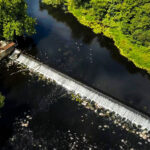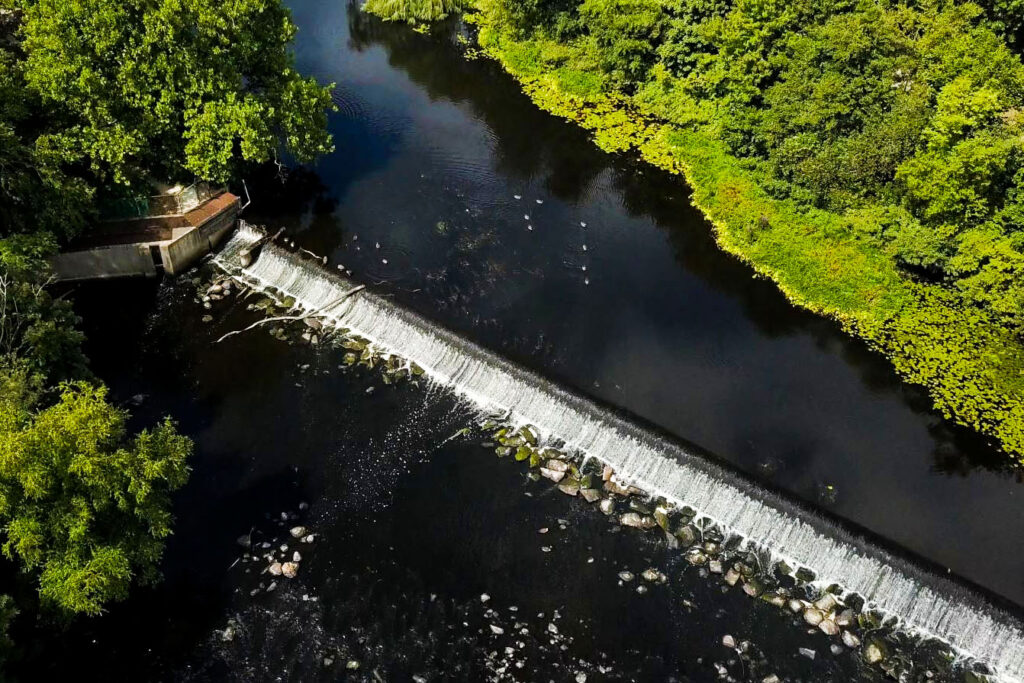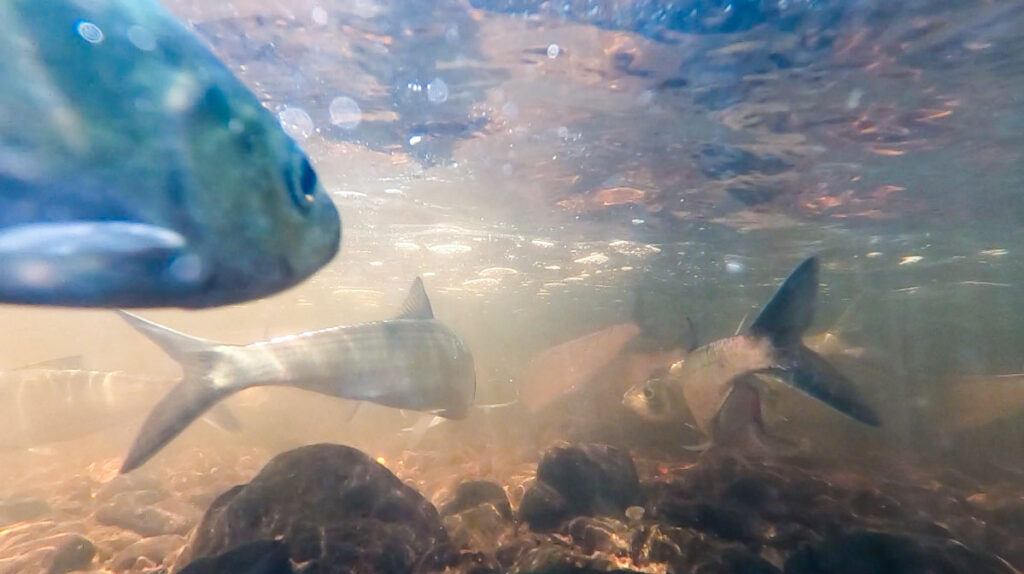
By Julia Hopkins
For more than 400 years, the Charles River has been altered, controlled, and dammed to bend to the will of industry and profit.
The river we know today is not free. Instead, a river radically changed by the long history of human intervention. We dammed its waters to power industry, leaving a legacy of toxic pollution in our wake. We straightened its gentle meanders, buried its tributaries, and hardened its shores, constricting its natural flow. We drained and filled its wetlands to free up more land and let our parking lots sprawl right up to its banks.
Now, we are facing the consequences. Today, our river and all who depend on it suffer from our attempts to control nature: polluted water quality from stormwater runoff, impeded fish passage by aging, defunct dams, invasive species growth, harmful cyanobacteria blooms, and biodiversity loss. Climate change is amplifying these impacts. We took away our river’s natural resilience to adapt to the challenges of increased precipitation, stronger storms, drought, and extreme heat. Now all of us, but especially our most vulnerable, are at risk.
We are at a critical juncture. Now is the time to reverse the antagonistic relationship we’ve built with the river by setting it free.
A river interrupted
Before colonization, the Charles River flowed freely, and Native Peoples relied on its vibrant population of migratory fish for food, water, and cultural survival. Each spring, the Charles River historically welcomed hundreds of thousands of migratory fish from the depths of the ocean to the river’s numerous lakes, ponds, and tributaries to spawn. American shad, blueback herring, alewives, rainbow smelt, white perch, striped bass, and American eel all enjoyed clean, rich habitats with cool, flowing waters to begin their lives.
In 1783, despite Massachusetts law requiring dam owners to provide ample fish passage, colonists raised Watertown Dam several feet to increase its power yield, completely blocking spring fish runs upstream to the Nipmuc people in Natick. The Nipmuc people residing in Natick petitioned the state legislature to oppose the Watertown Dam, as it infringed on Native Peoples’ rights to food sovereignty, stripping the community of vital resources, cultural ways of life, and free-flowing water.
However, their protest was to no avail. As dams were constructed on the Charles River, migratory fish lost a staggering two-thirds of their available habitat. The consequences were stark and swift. By 1920, American shad and alewives, two of the most populous native migratory fish species, were declared extinct in the Charles River and the possibility of their return was deemed remote in a study from the Massachusetts Division of Fisheries & Game. But American shad and alewives live in the Charles River today, thanks to the considerable cleanup of the river and ongoing restoration efforts.
Today, more than 100 dams continue to choke the Charles River and its tributaries with stark consequences for water quality, aquatic life, public health, and climate resilience.

Overhead view of the Watertown dam on the Charles River. Source: Charles River Watershed Association
Migratory fish are still stopped short at insurmountable functionless dams. Dams disrupt natural hydrology—the slow-flowing water upstream faces rising temperatures, rapid evaporation, the accumulation of sediments and excess nutrients, and disastrously low dissolved oxygen levels. These factors all contribute to invasive species growth, severe cyanobacteria blooms, reduced biodiversity, habitat loss, and in extreme conditions, the death of all aquatic life.
Above all, as climate change brings more frequent and intense heavy rainfall events, these dams were not designed for the intensity of today’s storms. Our homes, roads, and critical infrastructure will flood in the event of catastrophic dam failure.
A river resurgent
Let’s set the Charles River free. By removing functionless barriers like Watertown Dam and allowing nature to take its course, we could allow our river to again be a welcome place for all people, plants, and wildlife. Dam removal offers the opportunity to acknowledge the rights of present-day Nipmuc, Massachusett, and Wampanoag people, revive migratory fish populations, restore the river ecosystem, and build climate resilience across the watershed.
Across the state of Massachusetts, more than 60 relic mill dams have been removed from our rivers, including Old Mill Dam in Bellingham. Many more are under consideration for removal, including Watertown Dam, Charles River Dam in Natick, and Eagle Dam in Wrentham.
For some, dams are seen as iconic or historical structures, reminders of the area’s industrial past. Their long-lasting presence in our rivers and streams has become familiar, and dam removal presents an unknown. Some people wonder how wildlife they have witnessed near the dam could adapt to such a big change. But nature knows what to do, and nostalgia should not hold back our river’s right to be free.
But what does dam removal actually look like? When the barrier is slowly and carefully removed by engineers, in collaboration with wildlife experts and with the help of streambank restoration, our river will be resurgent. It will meander more naturally through the newly created flood plain, buffered by a vibrant wetland ecosystem that helps us weather intense storms, and welcome all manner of fish, birds, insects, and life.
The transformation will be swift. As the river’s edges are exposed to sunlight, dormant seeds will blossom from the riverbed into lush native plants––milkweed, swamp hibiscus, sedges, marsh marigold, asters, goldenrod––providing habitat for birds and wildlife and scenic beauty for all to enjoy.
With the dawn of spring, migratory fish will return from the ocean, instead of stopping short at a wall of concrete. They will experience free passage to an abundance of clean, cool waters and tributaries to spawn for the first time unimpeded in over four hundred years.
We will all be able to again enjoy the wonders of a wild, living river.
Learn more in A River Interrupted, Charles River Watershed Association’s long-form persuasive multimedia about dam removal and river restoration, and find ways to get involved on CRWA’s website www.crwa.org/dam-removal.
Julia Hopkins is communications and outreach manager at the Charles River Watershed Association.



Sorry, the comment form is closed at this time.